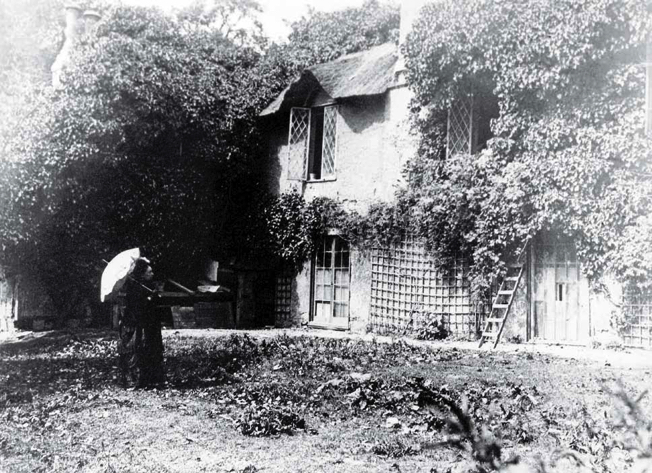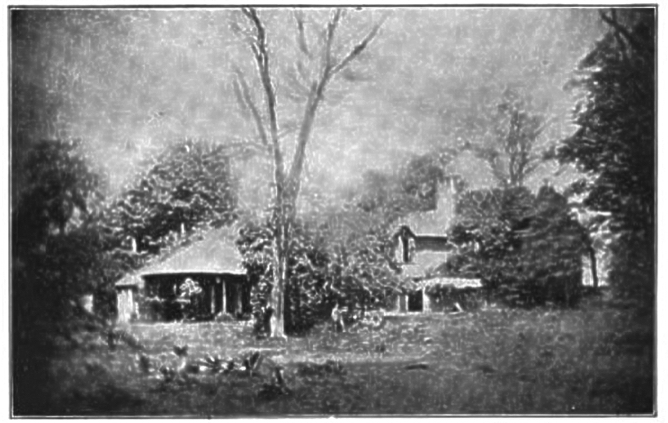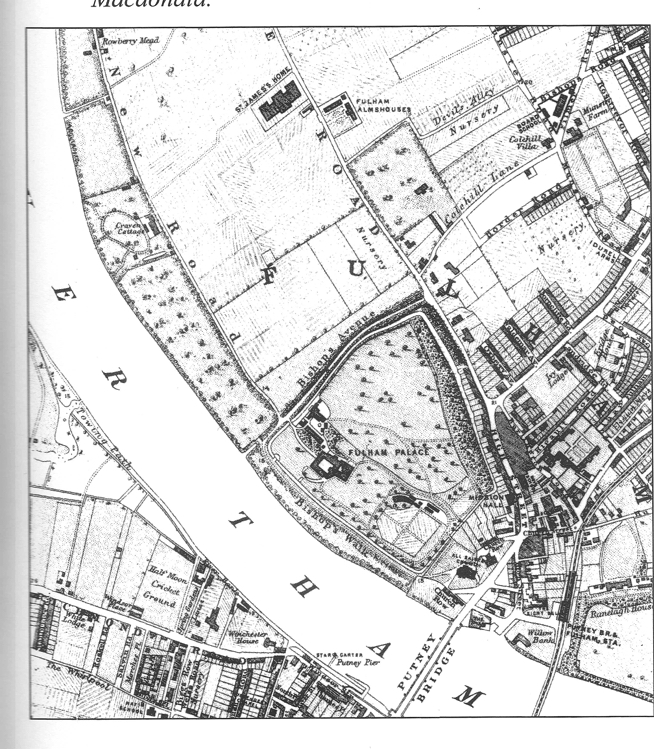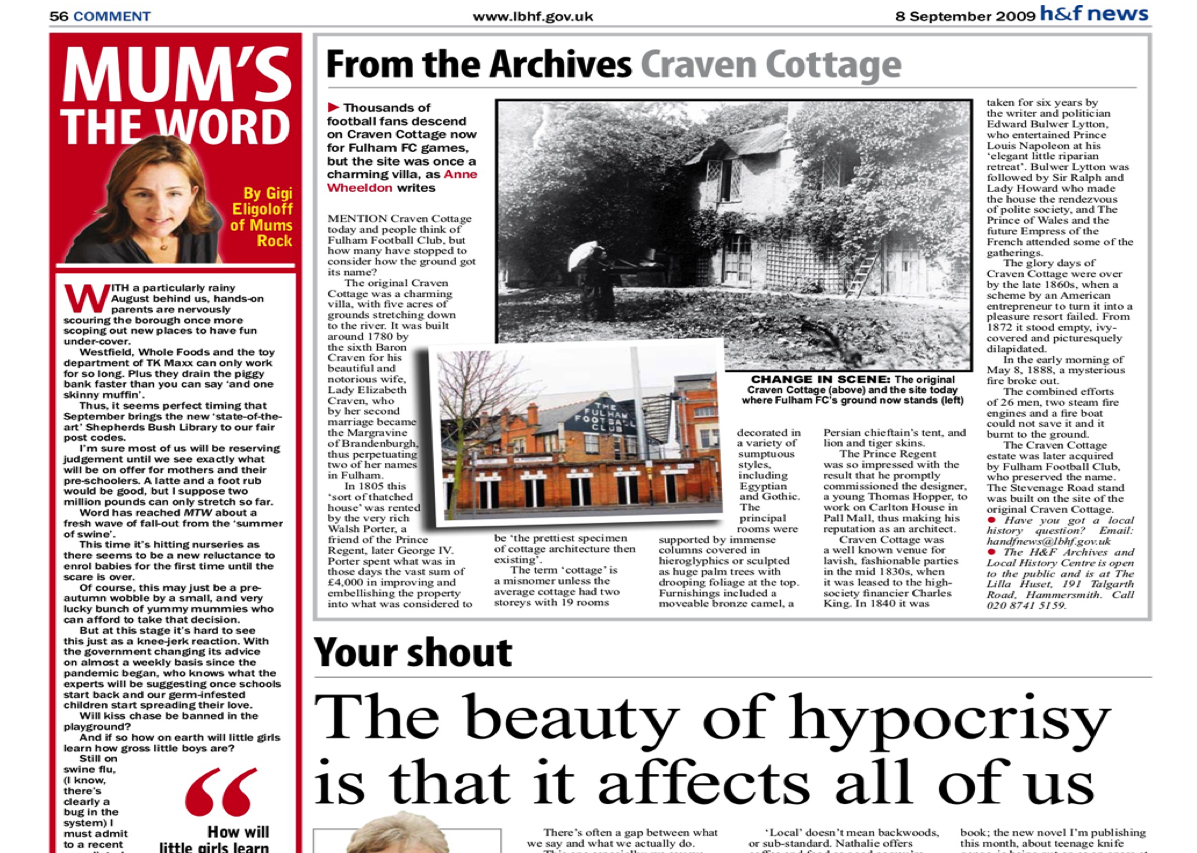There’s only one F in Fulham
The Fulham Fanzine 2019-20 Championship Season
THE ORIGINS OF Craven Cottage
If you don’t already know it some of this stuff is interesting
billp TOOFIF Updated Sunday, 22 April 2018 16:28
From the Fulham Chronicle website
Thousands of football fans descend on Craven Cottage now for Fulham FC games, but the site was once a charming villa as Anne Wheeldon writes
Mention Craven Cottage today and people think of Fulham Football Club, but how many have stopped to consider how the ground got its name? The original Craven Cottage was a charming villa, with five acres of grounds stretching down to the river. it was built around 1780 by the sixth Baron Craven for his beautiful and notorious wife, Lady Elizabeth Craven, who by her second marriage became the Margravine of Brandenburgh, thus perpetuating two of her names in Fulham. in 1805 this 'sort of thatched house' was rented by the very rich Walsh Porter, a friend of the Prince Regent, later George iV.
Porter spent what was in those days the vast sum of £4,000 in improving and embellishing the property into what was considered to be 'the prettiest specimen of cottage architecture then existing'. The term 'cottage' is a misnomer unless the average cottage had two storeys with 19 rooms decorated in a variety of sumptuous styles, including egyptian and Gothic. the principal rooms were supported by immense columns covered in hieroglyphics or sculpted as huge palm trees with drooping foliage at the top.
Furnishings included a moveable bronze camel, a Persian chieftain's tent, and lion and tiger skins. the Prince Regent was so impressed with the result that he promptly commissioned the designer, a young thomas Hopper, to work on Carlton House in Pall Mall, thus making his reputation as an architect.Craven Cottage was a well known venue for lavish, fashionable parties in the mid 1830s, when it was leased to the high-society financier Charles King.
In 1840 it was taken for six years by the writer and politician edward Bulwer Lytton, who entertained Prince Louis napoleon at his 'elegant little riparian retreat'. Bulwer Lytton was followed by Sir Ralph and Lady Howard who made the house the rendezvous of polite society, and the Prince of Wales and the future empress of the French attended some of the gatherings.the glory days of Craven Cottage were over by the late 1860s, when a scheme by an american entrepreneur to turn it into a pleasure resort failed.
From 1872 it stood empty, ivy-covered and picturesquely dilapidated.in the early morning of May 8, 1888, a mysterious fire broke out.the combined efforts of 26 men, two steam fire engines and a fire boat could not save it and it burnt to the ground.the Craven Cottage estate was later acquired by Fulham Football Club, who preserved the name. the Stevenage Road stand was built on the site of the original Craven Cottage.
The other day whilst having a trawl through the Hammersmith and Fulham Council website, quite by chance I came across an article concerning the origins of Craven Cottage. Although telling us nothing new, it at least added a few brushstrokes to the story so I thought it worth sharing.
Try finding any of this history of the Cottage on the Club's website and you could be forgiven for thinking that Craven Cottage as a building or indeed an area on the Thames didn't exist before Fulham Football Club came along.






The Cottage pre-dates, all the side roads apart from Biishop's Avenue, look no NIMBY houses!
